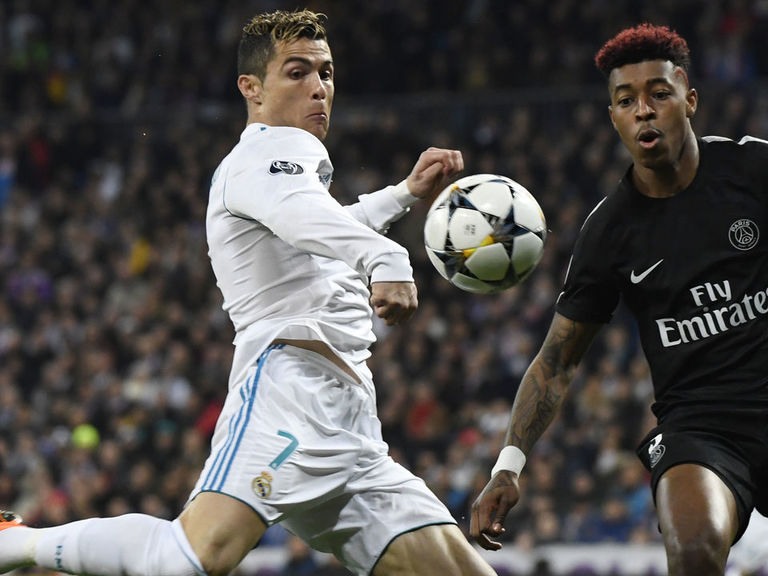Some of these decisions are easy. Some are agonizing. The deadline for NFL teams to designate franchise or transition players passed at 4 p.m. ET Tuesday with a fair amount of activity, all of it impactful.
For some, it’s a disappointing day, as players find out they’ll need to wait for the long-term contracts of their dreams and teams find themselves confronting the loss of an important player or two. For others, it’s a thrilling day, as the franchise tag numbers have grown so large that some players don’t mind the tag anymore.
For fans, it can be a confusing day, which is why we’re here to help. Here’s our quick-reaction look at who came out of the 2018 franchise period looking good and who came out of it with reason for concern:
WINNERS

Sure, it’d be better to have a long-term deal. But the defensive end franchise number this year is a whopping $17.143 million, and thanks to health and suspension issues in his first three years, Lawrence couldn’t have expected the Cowboys to rush into a commitment off one monster season. Lawrence will be 26 this time next year, and franchising him again in 2019 would cost Dallas $20.5716 million. So as long as he keeps playing at a high level, he’ll be in a great position. The edge rushers who got franchised last year — Jason Pierre-Paul, Chandler Jones and Melvin Ingram — each got long-term deals, so there’s a template for Lawrence and the Cowboys to get something even bigger done before July 16.

The Rams’ decision to franchise safety Lamarcus Joyner instead of Watkins means they can’t franchise Watkins, the former Bills first-rounder who was traded to Los Angeles prior to last season. Watkins didn’t put up big numbers in the Rams’ high-powered offense, but he did stay healthy for the first time since his rookie season, and Rams coaches were impressed with the way he handled a role that sometimes fell into the dreaded “decoy” category. He doesn’t turn 25 until June and is still viewed by enough people around the league as a top-level talent that he can expect a big deal ($12-$13 million per year?) if the Rams don’t sign him in advance of free agency.

The Seahawks opted not to franchise Richardson for what would have been $13.939 million, and that could end up looking like a bargain price for him. Having shown an ability to play in a 4-3 front as well as a 3-4, Richardson should have no trouble topping the $12.5 million per year Linval Joseph is getting from Minnesota. In fact, there was talk at the combine that Richardson’s price might come in closer to the $16.1 million per year that Kawann Short is getting from the Panthers.

Kirk Cousins. Jimmy Graham. Andrew Norwell. This class could get wild. Here’s everything to know heading into free agency, which begins March 14.


Not because of anything that happened Tuesday, but just as a reminder that both Brees and Solder got provisions put in their last contracts that prohibited the Patriots and the Saints from franchising them once the deals expired. That makes Solder an unrestricted free agent, and with the final three years of Brees’ deal automatically voiding next Wednesday, it gives the Saints a true deadline for Brees’ likely lucrative extension.

The Bears pulled a surprise move by applying the transition tag to Fuller, but think of it this way: The transition tag price is $12.971 million, which is $4.445 million more than Fuller would have made this season if the Bears had picked up his fifth-year option a year ago. That means he has already played himself into a 52 percent raise, and he could end up getting even more if another team wants to offer him a big contract. The transition tag allows other teams to make offers to Fuller and the Bears to keep him if they’re willing to match those offers. Odds seem decent that he’ll end up sticking in Chicago on a long-term deal, but the transition tag gives him a high starting point for negotiations, and he’s in a lot better shape than he was last summer, when the Bears had him on the trade block.
LOSERS

Yeah, the $14.544 million is nice. Specifically, it’s the 43-percent-more-than-the-average-annual-salary-of-any-other-running-back-in-the-league kind of nice. But we all know Bell wants a long-term deal, and for the second year in a row, it’s clear that he and the Steelers don’t see eye-to-eye on what he deserves. If they can’t get a deal finished by mid-July, Bell faces another 400-touch season at age 26 and the possibility of an early breakdown under the kind of workload he carries in the Steelers’ offense. Even if he makes it through the season healthy and finds himself in the running back version of Kirk Cousins’ situation this time next year, he isn’t a quarterback, which means he isn’t likely to enjoy the kind of eye-popping raise for which Cousins is in line right now.

That’s right. There are no winners in the Steelers/Bell situation. Pittsburgh faces another offseason through which Bell is sure to hold out, and it’s possible that he could even sit out a regular-season game or two, as Seattle’s Kam Chancellor did a couple of years ago. The Steelers’ best-case scenario if they can’t get a Bell deal finished before July is that he plays great and they’re in this same spot next year, when franchising their superstar back for a third straight season would cost $20.94336 million. If they can’t get him signed to a long-term deal by the July 15 deadline, this looks like Bell’s last season as a Steeler.

Once Washington traded for Alex Smith, there was no way they were really tagging Kirk Cousins again for nearly $35 million and trying to trade him. As such, Tuesday just marked the expected end of Cousins’ time in Washington and served as a reminder of how badly the organization bungled his situation each of the past two offseasons. How good would Washington look right now if, two years ago, the front office had given Cousins the $19 million a year he wanted then?

TO BE DETERMINED

The Dolphins rushed right out and tagged Landry to the tune of $15.982 million on the first day teams could tag players, and everybody was confused. The confusion hasn’t abated, as Miami spent the entire combine talking to teams about potential Landry trades, and then he informed the team that he would sign the tag, which means they can’t rescind it anymore. It still seems that the most likely outcome is a trade, but at this point, it seems that any trade would require Landry to have a new deal in place with the acquiring team. So we wait.
Worst case, Landry is on a team that no longer seems to want him for one more year at a premium price. Best case, he gets the deal Miami never wanted to give him from a new team. It’s tough to decide whether he’s a “winner” or a “loser” in this particular sweepstakes just yet.



